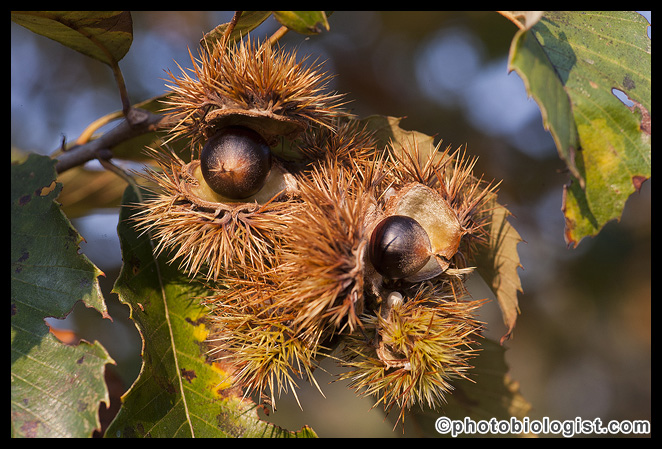I know it’s going to sound repetitious, and it is repetitious because I keep repeating it. When I’m photographing something, even something as simple as a fallen acorn, it’s all about the light. A simple and inexpensive change in lighting can make a big difference in the way an image looks.
As I was getting in my truck this past weekend, I noticed that the white oak acorns were dropping. And I noticed that there was one particularly nice looking acorn laying on a recognizable white oak leaf on a bed of moss near the base of the oak tree that I presumed had dropped the acorn. Knowing that I often talk about acorns in a number of different contexts – fruit of a tree, natural reproduction of a hardwood forest, as hard mast (fruit eaten by animals), mast quality (red oak vs white oak), squirrel/deer/turkey management, and more, I decided that I would photograph this simple acorn.
So, I took out my camera and a macro lens and laid down next to the tree and took a shot or three.

White Oak Acorn In Existing Light
Nikon D3, 105 mm macro, f/16, 1/25th second, ISO 1250, handheld, slight crop
The shot looked fine to me, but it didn’t show the detail & potential vitality of this little gem that I wanted to show. I knew that adding some soft, golden light should make this image look different (hopefully better), so I dug out my gold reflector and got my lovely, helpful wife to hold it for me (which saved me from having to dig out a tripod & clamps!). And then I shot the same shot again…

White Oak Acorn with Gold Reflector
Nikon D3, 105 mm macro, f/16, 1/80th second, ISO 1250, handheld, slight crop
The shot with the gold reflector looks more “alive” to me. The angled light shows more detail in the cup, the shadows are not as dark, and my shutter speed increased a couple of stops making a handheld shot much easier.
Neither shot is “right” or “wrong” but that little bit of reflected sunlight improved the shot slightly for most of the reasons that I would use it. I’m sure that I could have done something similar in Photoshop, but the details wouldn’t have been revealed as nicely, the shadows wouldn’t have been filled as naturally, and it sure wouldn’t have increased my shutter speed towards something reasonable for hand-holding. This “manual Photoshop” basically replicated the light a few hours earlier that morning or a several hours later that day – that “golden hour” of rising & setting sun…
Here’s a side-by-side comparison of the two shots…
I find the relatively small expense & light weight of a reflector in my camera bag to be worthwhile for situations like this.
Of course, if you can catch “good” natural light, then you don’t need the reflector. Later that afternoon, I found a chinkapin loaded with fruit. I went back in late afternoon when the natural light quality was good and photographed yet another hard mast species without needing to use a reflector to get the light quality that I wanted.

Chinkapine fruit (a chestnut relative whose populations have been decimated by chestnut blight).
Nikon D3, 105 mm macro, f/8, 1/80th second, ISO 360, handheld, existing light

